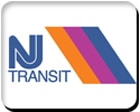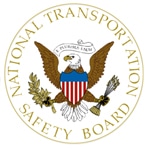According to an analysis done by northjersey.com, Metro-North, New Jersey Transit (NJT) and the Long Island Rail Road (LIRR) have been fined hundreds of thousands of dollars since 2013.
Before the companies’ lawyers negotiated for lower fines, Metro-North had been assessed more than $1 million in penalties and NJT more than $700,000. After the fines had been negotiated down, Metro-North paid $859,375; NJT paid $576,175 and LIRR paid $131,725.
Fines were assessed for safety violations involving track, signals, locomotives, equipment and train crews; as well as for alcohol and drug testing, employee hours of service, and railroad operating practices.
Northjersey.com notes that alcohol and drug testing violations — of which Metro-North had the most infractions — does not necessarily mean that crew members are reporting to work under the influence.
Click here to read the full analysis from northjersey.com.
Tag: Metro-North
 The Connecticut Post reported that, through a recently signed agreement, Metro-North employees who see unsafe conditions can now say something about it by reporting them, without fear of retribution, on a confidential close call hotline.
The Connecticut Post reported that, through a recently signed agreement, Metro-North employees who see unsafe conditions can now say something about it by reporting them, without fear of retribution, on a confidential close call hotline.
Read the entire article here.
 When a passenger boards a Metro-North train, there is every expectation to arrive at the destination safely.
When a passenger boards a Metro-North train, there is every expectation to arrive at the destination safely.
Yet Congress is considering easing a year-end deadline for railroads to install a technology — called Positive Train Control — that will prevent accidents like those due to speed on curves. Some of the nation’s railroads, including Metro-North, say they cannot meet the Dec. 31 deadline, which was mandated in 2008 after a California crash killed 25.
A Federal Railroad Administration safety officer testified before a Congress last week that 71 percent of rail commuter lines in the country will not make the deadline. Positive Train Control, which automatically slows down or stops a train, can prevent four types of accidents: a train-to-train collision on the same track, a switch improperly aligned or a bridge not in the right position, as well as excessive speed on a curve.
Read more from CTPost.
As the investigation into the deadliest accident in the history of the Metro-North Railroad got underway on Wednesday, officials said they still could not explain how or why a sport-utility vehicle became stranded on the train tracks.
A crowded commuter train traveling north through Westchester County slammed into the S.U.V. on Tuesday (Feb. 3) night, setting off a devastating explosion and fire that killed six people. Fifteen people were being treated at local hospitals, state officials said.
Read the complete story at The New York Times.
 NJ Transit train conductors with a history of being less than courteous to riders will soon receive retraining.
NJ Transit train conductors with a history of being less than courteous to riders will soon receive retraining.
Starting early next year, some front-line rail workers will have to take a crash course to bolster their people skills.
“It’s a program that is going to help employees understand their roles as it relates to providing exceptional customer service,” said Nancy Snyder, spokeswoman for NJ Transit, which contracts with Metro-North Railroad to provide rail service in Rockland and Orange counties.
Read more from The Journal News.
The National Transportation Safety Board said Oct. 28 that the December 2013 Metro-North train derailment that killed four and injured 61 occurred when the train engineer had fallen asleep.
The train rounded a curve at 82 mph, well above the 30-mph speed restriction. The NTSB report determined that the operator had “an undiagnosed severe obstructive sleep apnea exacerbated by a recent circadian rhythm shift required by his work schedule.” In other words, his apnea condition was made worse when his regular shift was moved from one that started in the late afternoon and ended in the early morning to another that began between 4 and 5 a.m. and continued until the afternoon.
Read the complete story at Radio Station KRVN.
The Metro-North Railroad has fallen prey to a “deficient safety culture” that prizes on-time performance at the expense of protecting riders and workers, according to a blistering federal review that was ordered after a spate of rail disasters.
The review, from the Federal Railroad Administration, found that the commuter railroad’s operations control center pressured workers “to rush when responding to signal failures,” and that workers struggled to secure the track time needed to perform essential repairs.
Read the complete story at The New York Times.

The following investigative update is provided regarding the Dec. 1 derailment:
Over the weekend, investigators completed the mechanical inspection of the train and found no anomalies. As stated last week, there were also no anomalies found with the tracks or with the signal system. Investigators examined car 6222, the lead car in which the engineer controlled the train. The “dead-man” switch, a foot-pedal on the floor of the cab that must be depressed to keep the train moving was evaluated. The pedal moved and released as expected. No anomalies were noted. In addition, the control key switch worked as designed. The team also conducted a site/distance test and found no problems with visibility.
As a result, at this time, the NTSB believes that if positive train control technology was installed on this line and train, it would have required the engineer to slow the train to an appropriate speed or stop the train in the event the engineer did not do so, likely preventing the derailment. The NTSB has been advocating for PTC for more than 20 years and it is on its Most Wanted List of transportation improvements. More information can be found at http://www.ntsb.gov/safety/mwl8_2012.html.
Investigators completed interviews with all crew members. All have been cooperative and forthcoming. All said it was a normal run until shortly before the derailment sequence.
Investigators are still awaiting results of crew drug tests and cellphone records.
Investigators also interviewed the engineer of a train that passed the accident train, 8808, near Riverton at about 7:11 a.m. That engineer said the headlight on train 8808 was on high and the engineer did not dim his light as is required by Metro-North.
Mechanical examinations, such as shop testing of the of dead-man switch, inspection and testing of speed sensors and tachometer rings, the brake control unit, and the propulsion controller from the control car have been completed. No anomalies were found.
Ongoing activities include interviews with passengers, Metro-North employees who were riding on the accident train and first responders. Records continue to be gathered.
Investigators will also take 3-D scans of the damaged cars and locomotive for use in a digital accident re-creation and for detailed measurements.
The NTSB would also like to talk to passengers on the train that derailed to learn about what they experienced and causes of injury. Our goal is to ultimately make future improvements in the design of passenger rail cars.
Passengers on Metro-North train 8808 on Dec. 1 can contact the NTSB by email at eyewitnessreport@ntsb.gov.
NEW YORK (AP) – A week after four people died in a New York commuter train derailment, two federal lawmakers proposed Sunday that trains nationwide be outfitted with cameras pointed at engineers and at the tracks.
“I know you’re going to hear from Metro-North that there are costs, but the costs of these audio and visual recorders is minuscule, in fact negligible, compared to the hundreds of millions of dollars that this tragic incident will cost Metro-North in the end,” said Sen. Richard Blumenthal of Connecticut who joined New York Sen. Charles Schumer for a news conference at Manhattan’s Grand Central Terminal.
Read the complete story at the Associated Press.

“Safety is our highest priority, and we must do everything we can to learn from this tragic crash and help prevent future derailments,” said U.S. Transportation Secretary Anthony Foxx. “While we assist the National Transportation Safety Board in carrying out its investigation, this Emergency Order will help ensure that other Metro-North trains travel at appropriate, safe speeds.”
EO 29 requires Metro-North to provide the FRA with a list of main track locations where there is a reduction of more than 20 mph in the maximum authorized passenger train speed by Dec. 10, 2013. Further, Metro-North is ordered to identify appropriate modifications to its existing automatic train control system or other signal systems to enable adequate advance warning of and adherence to such speed restrictions. These modifications will help prevent another over-the-speed-limit event if a locomotive engineer fails to take actions to appropriately slow or stop a passenger train.
In the meantime, Metro-North is ordered to operate trains with two qualified train crew members in the controlling locomotive cab or passenger car control compartment at the locations where speed limits change by 20 mph or more until the signal work at these locations is complete. Additionally, the railroad must submit to the FRA for approval an Action Plan that ensures the safety of its operations for passengers and employees by Dec. 31. The plan must contain target dates and milestones for implementing necessary signal system modifications.
“Last year was the safest on record for our nation’s rail industry,” said FRA Administrator Joseph C. Szabo. “Even with a 43 percent decline in train accidents nation-wide over the past decade, we must remain steadfast and vigilant to ensure passengers and employees are safe. The public deserves better and our mission is to drive continuous safety improvement.”
The EO is a mandatory directive to the railroad, and failure to comply with its requirements will result in enforcement actions against the railroad or individuals who violate it. Today’s EO follows a letter issued by the FRA earlier this week calling on Metro-North to launch a safety stand-down with all employees and to fully implement the confidential close call reporting system, which has helped improve rail safety on other lines.
The Federal Railroad Administration had already increased its oversight and enforcement of Metro-North’s rail lines following the May 2013 crash, including additional inspections of its lines and audits of Metro-North’s operations and compliance with federal regulations. FRA is also planning to conduct an extensive investigation of the carrier’s safety compliance with all regulated railroad safety disciplines.
To view EO 29, click here.